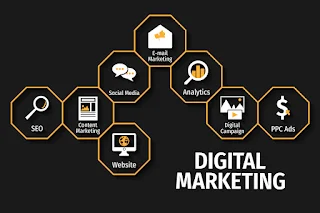Adobe Photoshop and Adobe Illustrator are two of the most popular graphic design software applications developed by Adobe Inc. While they both serve the purpose of creating and editing digital graphics, they have distinct features, functionalities, and use cases. Understanding the primary differences between Photoshop and Illustrator is essential for graphic designers to choose the right tool for their specific design tasks.
Adobe Photoshop
Adobe Photoshop is a raster-based image editing software primarily used for manipulating and enhancing digital photographs and creating complex digital artwork. It is equipped with a wide range of tools and features tailored for photo editing, retouching, and compositing.
1.Raster vs. Vector:The fundamental difference between Photoshop and Illustrator lies in their underlying structure. Photoshop is a raster-based software, which means it works with pixels. When you create or import an image into Photoshop, it is composed of a grid of pixels, each with its own color value. This makes Photoshop well-suited for editing and manipulating photographs, as it allows for precise control over individual pixels.
2. Photo Editing: Photoshop is renowned for its extensive set of photo editing tools, including adjustment layers, filters, masks, and brushes. These tools enable users to perform tasks such as color correction, retouching imperfections, removing backgrounds, and applying various effects. Photoshop's versatility in editing raster images makes it an indispensable tool for photographers, digital artists, and designers working with photographic elements.
3. Pixel-Based Artwork: In addition to photo editing, Photoshop is widely used for creating digital artwork, illustrations, and graphics that rely on pixel-based techniques. Artists can use brushes, gradients, shapes, and blending modes to create intricate designs and compositions. However, since Photoshop works with pixels, scaling raster images can lead to loss of quality, especially when enlarging images beyond their original resolution.
4. File Formats: Photoshop supports a wide range of raster-based file formats, including PSD (Photoshop Document), JPEG, PNG, TIFF, and GIF. PSD is the native file format of Photoshop, preserving layers, masks, and other editing attributes for future modifications.
5. Output for Web and Print: Photoshop is commonly used for creating graphics for both web and print media. Designers can create web graphics such as banners, buttons, and social media posts, as well as print materials like posters, flyers, and brochures. However, when designing for print, designers must ensure that their documents are set up with the appropriate resolution and color mode (CMYK for print).
Adobe Illustrator
Adobe Illustrator is a vector-based graphic design software primarily used for creating scalable illustrations, logos, icons, typography, and other vector-based artwork. Unlike raster-based software, Illustrator works with mathematical equations to define shapes and lines, allowing for infinite scalability without loss of quality.
1. Vector Graphics: The defining feature of Illustrator is its use of vector graphics. Instead of pixels, Illustrator uses mathematical paths and points to create shapes, lines, and curves. This makes Illustrator ideal for creating artwork that needs to be scaled to different sizes without losing sharpness or clarity. Vector graphics are resolution-independent, making them suitable for both print and web applications.
2. Illustration and Logo Design: Illustrator is widely used for creating illustrations, logos, and iconography due to its ability to create crisp, clean lines and shapes. Designers can draw, manipulate, and combine vector objects using tools such as the Pen tool, Shape tools, Pathfinder panel, and Anchor Point tools. Additionally, Illustrator supports advanced features such as gradients, patterns, and brushes, allowing for intricate and detailed artwork.
3. Typography: Illustrator excels in handling typography, offering precise control over typefaces, fonts, kerning, leading, and other typographic elements. Designers can create custom lettering, manipulate text outlines, and apply effects to create stylized typography. Illustrator also supports the creation of text on a path, allowing text to follow curved or custom shapes.
4. *Color Management:* Illustrator provides robust color management tools, allowing designers to work with spot colors, process colors (CMYK), and web-friendly colors (RGB). Additionally, Illustrator supports color swatches, gradients, and color libraries, making it easy to maintain consistency and accuracy in color usage across projects.
5. File Formats: Illustrator supports a variety of vector-based file formats, including AI (Adobe Illustrator), EPS (Encapsulated PostScript), PDF (Portable Document Format), and SVG (Scalable Vector Graphics). These formats are widely used for sharing vector artwork with clients, printers, and other design applications.
Choosing Between Photoshop and Illustrator
The choice between Photoshop and Illustrator depends on the specific requirements of a design project and the nature of the artwork being created.
Use Photoshop When:
- Working with raster-based images, such as photographs or scanned artwork.
- Performing detailed photo editing, retouching, and manipulation.
- Creating digital paintings, compositions, and photo montages.
- Designing graphics for web and screen-based media.
- Incorporating complex textures, effects, and filters into artwork.
Use Illustrator When:
- Creating logos, icons, illustrations, and typography.
- Designing artwork that requires scalability without loss of quality.
- Working with vector-based shapes, lines, and paths.
- Collaborating with printers or other designers who require vector files.
- Producing artwork for both print and web applications.
In some cases, designers may need to use both Photoshop and Illustrator in conjunction with each other to leverage the strengths of each program. For example, a designer may create a logo or illustration in Illustrator and then import it into Photoshop for further editing or integration into a larger composition.
In conclusion, while Adobe Photoshop and Adobe Illustrator are both powerful graphic design tools, they serve different purposes and are optimized for different types of design tasks. Photoshop excels in raster-based image editing and manipulation, while Illustrator is ideal for creating vector-based illustrations, logos, and typography. By understanding the primary differences between Photoshop and Illustrator, designers can choose the right tool for their specific design needs and create stunning visual content with precision and efficiency
%20(1).jpg)

.png)




%20(1).jpg)